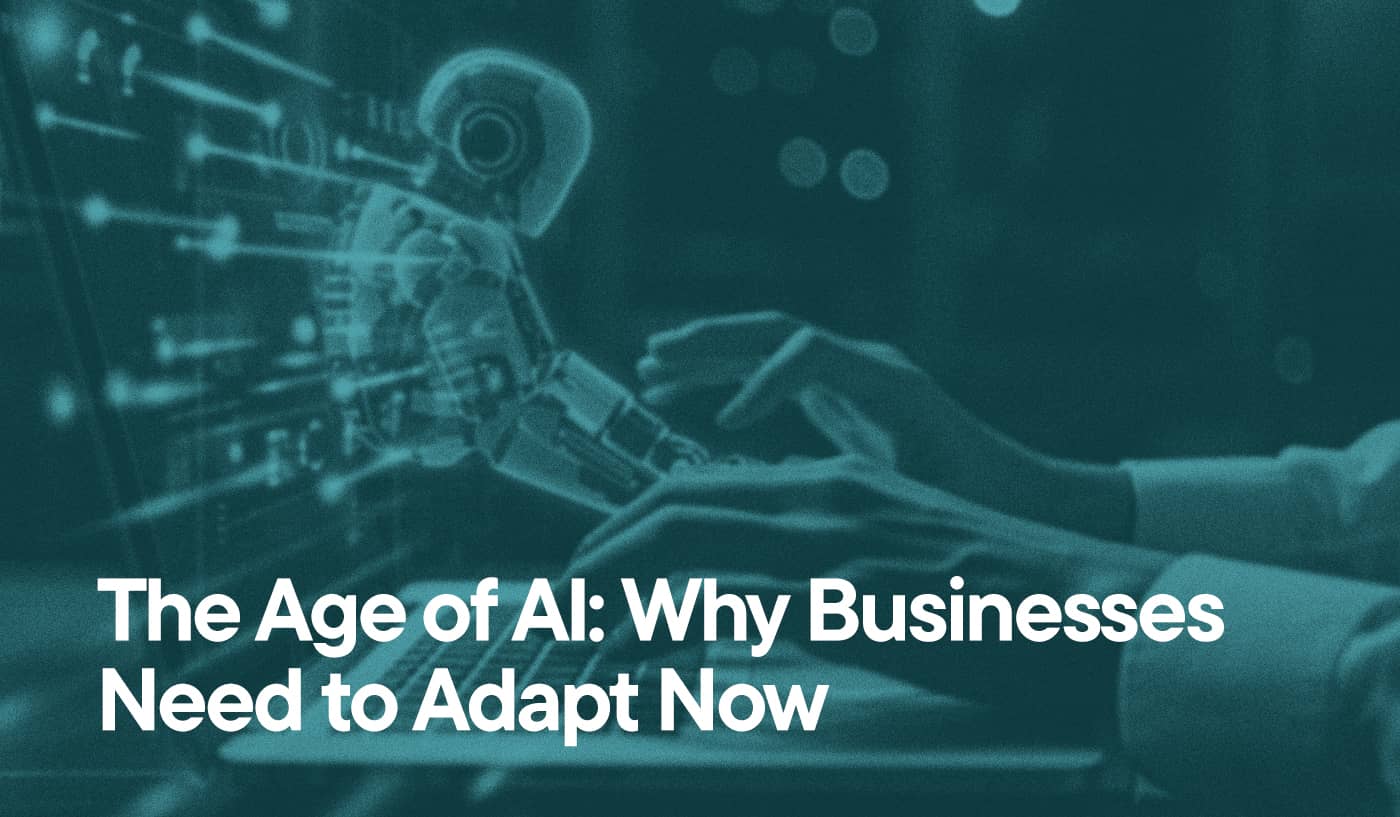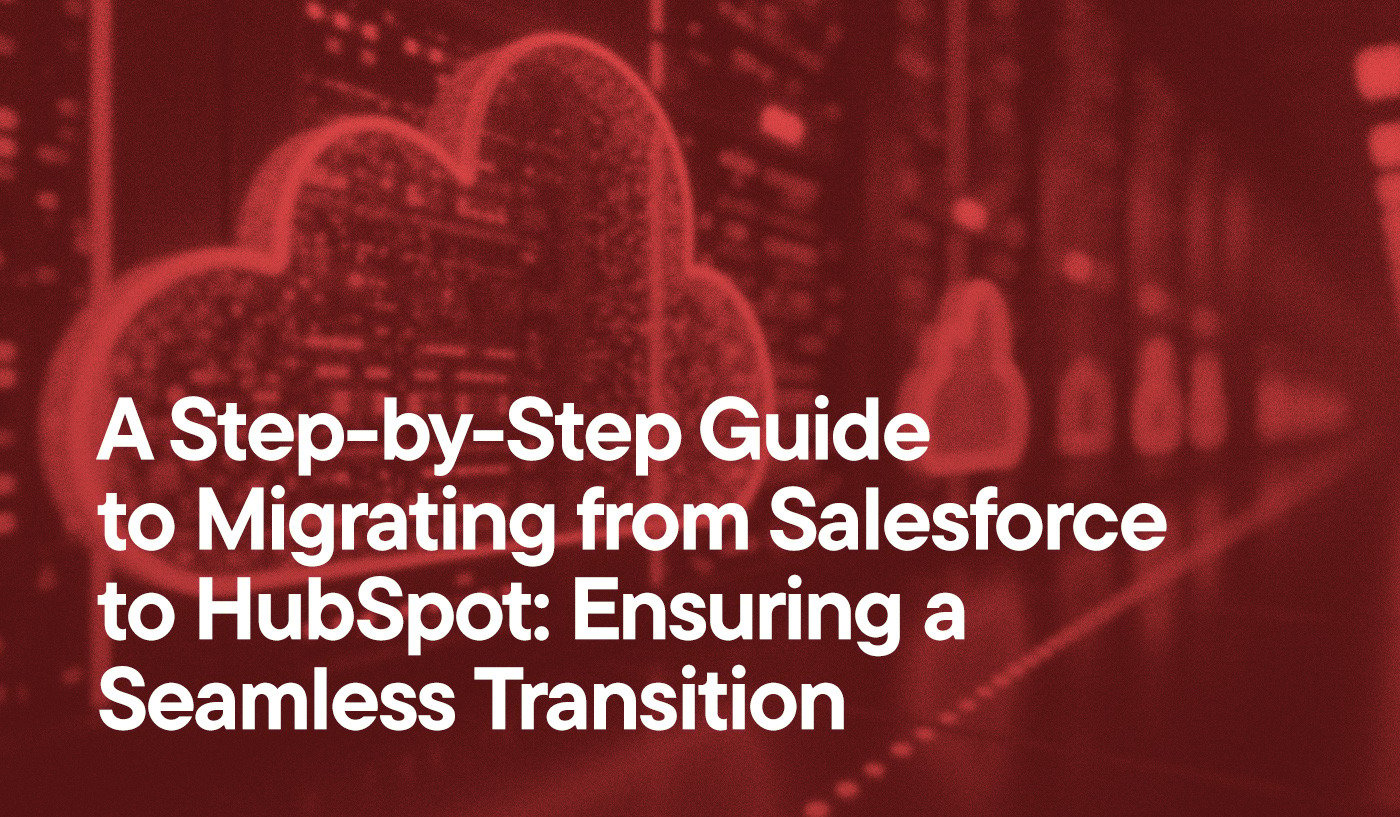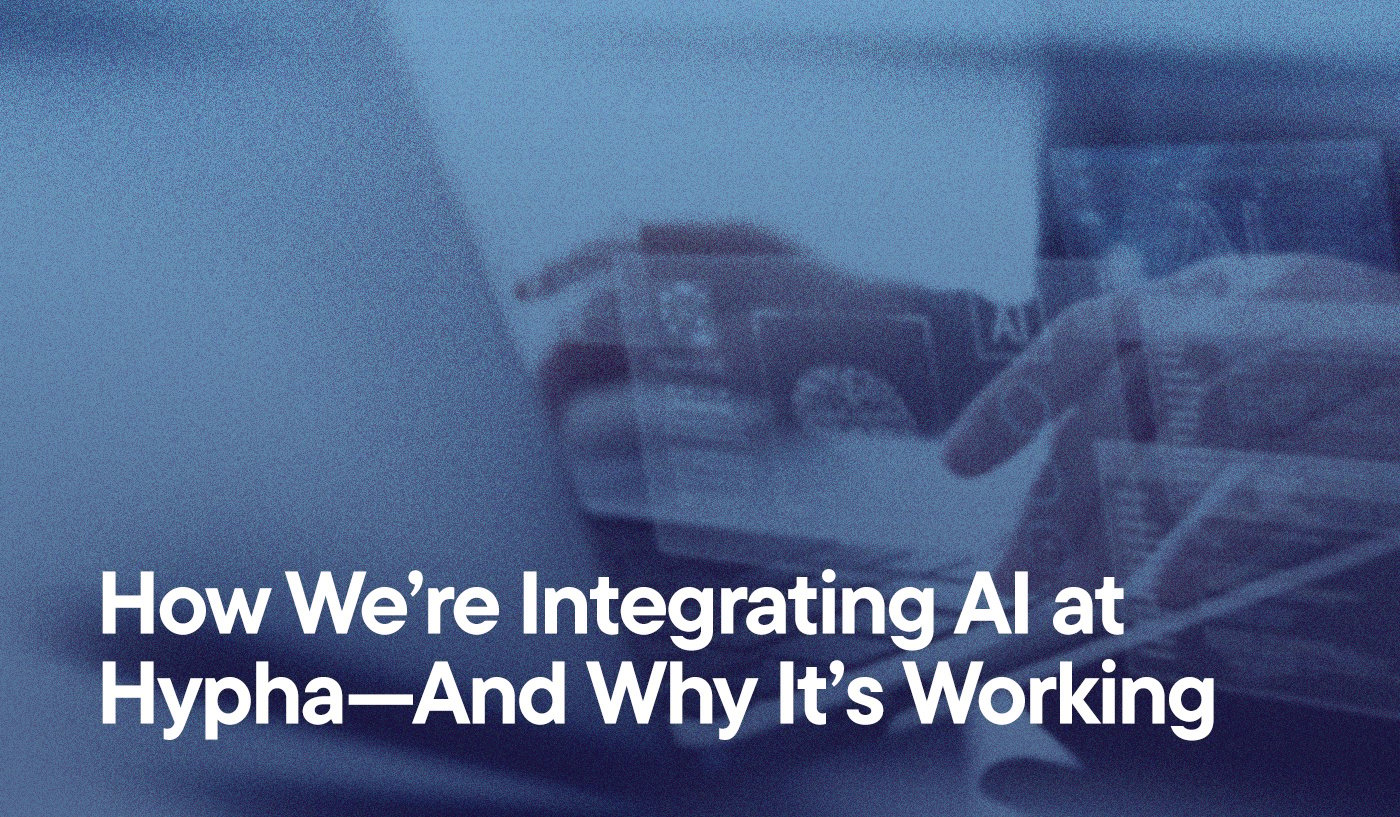The business landscape is undergoing a fundamental shift.
Artificial intelligence has moved beyond buzzwords and experimentation to become a genuine differentiator in how companies operate and compete.
While most executives recognize AI’s transformative potential, IBM’s latest research reveals a striking gap: Only a quarter of organizations are actively innovating with AI to create new business models.
This disconnect between recognition and action creates both risk and opportunity for forward-thinking organizations.
As platforms like HubSpot introduce powerful new AI capabilities that can transform customer support efficiency and enrich critical data, organizations must consider not just whether to adapt, but how quickly they can transform their operations to remain competitive.
Key Takeaways
Today’s AI transformation is reshaping how businesses operate, with several critical insights emerging:
- Companies successfully scaling AI are significantly outperforming their competitors in revenue growth and operational efficiency
- HubSpot’s new AI tools are revolutionizing customer engagement with intelligent automation and personalized support capabilities
- Effective implementation requires three core elements: strategic foundation, technical infrastructure, and workforce development
- Organizations using open-source AI tools are seeing notably higher returns on their investments
“Companies that lead in AI adoption are already outperforming their peers by 15% in revenue generation—a figure projected to more than double by 2026.” - World Economic Forum
Digital Transformation Landscape
The impact of AI extends far beyond simple automation or efficiency gains.
According to a Capgemini survey of 1,100 executives:
- 82% of large enterprises plan to integrate AI agents within the next three years
- 71% believing these tools will significantly improve workflow automation and customer satisfaction.
The evolution of AI applications has been particularly dramatic. What began as simple chatbots has evolved into sophisticated AI agents capable of handling complex workflows.
Google Cloud’s 2025 AI Trends Report identifies several key types of AI agents transforming business operations:
- Customer Agents: Delivering personalized experiences 24/7 across channels, handling everything from routine inquiries to complex product recommendations
- Employee Agents: Boosting productivity by managing repetitive tasks and streamlining processes, allowing workers to focus on higher-value activities
- Data Agents: Supporting research and analysis by finding actionable insights while maintaining factual integrity
The impact of these tools is already measurable.
A working paper published in the National Bureau of Economic Research (NBER) found that access to AI assistance increases worker productivity by 15% on average, with particularly interesting implications across skill levels.
This isn’t just about adopting new technology—it’s about fundamentally reimagining how businesses operate.
According to IBM’s latest industry analysis, organizations that effectively scale AI are significantly outperforming their peers who remain in the experimentation phases.
The difference lies not in the technology itself, but in how organizations approach its implementation and integration into their core business processes:
- Clear alignment between AI initiatives and business objectives
- Robust data infrastructure and governance frameworks
- Comprehensive employee training and enablement programs
- A systematic approach to scaling successful pilots
Transform Your Business With AI Technology
Struggling to Keep Pace With the AI Revolution?
Discover Our Strategic AI Integration Solutions arrow_forwardMeeting Modern Customer Expectations
The urgency for AI adoption isn’t just driven by operational benefits—it’s increasingly demanded by customers themselves.
According to the World Economic Forum’s (WEF) latest report, AI has evolved from a competitive differentiator to a fundamental business requirement.
Today’s customers expect AI-enhanced experiences as standard, with features like chatbots, virtual assistants, and personalized recommendations becoming the norm rather than the exception.
The WEF data is compelling:
- Over 70% of customers report that AI improves their shopping experience by saving time and offering personalized interactions.
- Perhaps most striking, 65% of customers believe AI understands their habits as well as, or better than, their close friends and family.
- More than half of all customers now actively seek out AI-guided experiences across various platforms.
Customer Service Teams Embrace AI Solutions
HubSpot’s latest research reveals strong alignment between customer expectations and service provider readiness.
According to its survey, 84% of respondents believe AI/automation tools will be instrumental in helping them meet customer service expectations.
This optimism is well-founded: 86% say AI will transform their customers’ experience, while 75% expect AI/automation tools to improve customer service response times.
The data shows an interesting split in how AI is being deployed across different types of service interactions.
When asked about AI/automation usage, 45% of customer service representatives view AI as valuable for helping staff resolve routine customer service issues. This increases to 54% when dealing with more complex issues and tickets, suggesting that AI’s role grows more important as service complexity increases.
Chatbots Lead AI Adoption in Customer Service
Chatbots, in particular, have emerged as a crucial component of AI-powered customer service.
An impressive 90% of companies report that chatbots are effective at handling customer service requests, making them the most successful AI implementation in the customer service toolkit.
This success has led to increased investment, with chatbots slated to receive the highest level of investment among all customer service channels in 2024.
The bottom line: Both service providers and customers see AI as a critical tool for delivering enhanced support experiences. The technology is increasingly viewed not just as an efficiency tool, but as a core component of modern customer service delivery.
Market Leaders vs. Laggards: The Growing AI Divide
A clear divide has emerged in AI adoption, separating market leaders from those still finding their way.
According to IBM, about 15% of organizations have broken away from the pack, achieving remarkable results through strategic implementation. These leaders have seen revenue growth rates exceed their peers by over 25% by focusing on three core elements:
- Aligning AI initiatives directly with business goals and measuring outcomes
- Building robust technical foundations that can scale with growing demands
- Investing in comprehensive team training and development programs
Meanwhile, the majority of organizations—about 85%—remain in the “learning” phase.
These companies often struggle with common challenges: disconnected initiatives without clear strategic alignment, technical debt from piecemeal implementations, and missed opportunities for innovation. The result is higher operational costs and diminished competitive advantage.
This performance gap between leaders and learners is expected to widen significantly by 2025.
Organizations that can learn from the leaders’ playbook—focusing on strategic alignment, technical foundation, and team development—will be better positioned to compete in an increasingly AI-driven business landscape.
“Over 70% of customers report that AI improves their shopping experience by saving time and offering personalized interactions.”
Making Your Organization AI-Ready
Of course, implementing AI isn’t just about picking the right tools and hitting “go.”
If history has taught us anything, it’s that organizations will likely struggle if they treat AI adoption like any other software rollout. The reality is that you need a comprehensive approach that touches every part of your business. Here’s what that looks like:
Start with Strategy (Not Shopping)
Before diving into AI tools, get clear on what you’re trying to achieve. Ask yourself:
- What specific business problems are we trying to solve?
- How will we measure success?
- Who needs to be involved in making this work?
- What guardrails do we need to put in place?
Build Your Foundation
Think of AI integration like building a house—you need solid infrastructure before adding all the cool features. When organizations take the time to build strong internal systems, they can:
- Make better use of their existing data
- Keep customer experiences consistent
- Scale solutions across teams without chaos
- Add new AI capabilities without starting from scratch each time
Bring Your Team Along
Your team’s success with AI tools will make or break your implementation. This means:
- Getting everyone comfortable with the tools through proper training
- Creating clear guidelines so everyone knows how to use AI effectively
- Building feedback loops to learn what’s working (and what isn’t)
- Sharing successes and lessons learned across teams
Measure What Matters
Keep track of how things are going, but don’t just focus on the numbers. Look at:
- Whether you’re actually solving those initial problems
- How well your systems are working together
- If your teams are successfully adopting the tools
- What your customers think about the changes
Remember: AI implementation isn’t a race—it’s a transformation. The organizations that take time to build these foundations end up moving faster in the long run, even if it feels slower at the start.
Empowering Your Workforce for AI Success
One of the biggest misconceptions about AI implementation is that it’s primarily a technical challenge.
In reality, your people are the key to making AI work effectively in your organization. Here’s how to build a workforce that embraces rather than fears AI:
Focus on Augmentation, Not Replacement
Let’s address the elephant in the room: AI isn’t about replacing your team. It’s about giving them superpowers.
When you position AI as a tool that helps people work smarter—not a technology that makes them obsolete—you’ll see much higher adoption rates and better results.
Build Confidence Through Learning
Your team needs more than just technical training. They need to understand:
- When to use AI tools (and when not to)
- How to evaluate AI outputs effectively
- Ways to combine human expertise with AI capabilities
- Best practices for their specific roles
Create Safe Spaces for Experimentation
Give your team room to experiment with AI tools in low-stakes environments. This might mean:
- Setting up “learning pods” where teams can practice together
- Creating sandboxed environments for testing new workflows
- Encouraging sharing of both successes and failures
- Celebrating innovative uses of AI tools
Develop Clear Guidelines
Help your team navigate AI use confidently by:
- Establishing clear policies for AI tool usage
- Creating ethical guidelines for AI implementation
- Setting up feedback channels for concerns and ideas
- Providing resources for ongoing learning
Your workforce’s relationship with AI will largely determine your success with these tools. Take the time to bring everyone along on the journey, and you’ll build a more capable, confident, and innovative organization.
HubSpot’s AI Evolution: What It Means For Your Business
The latest wave of AI tools in HubSpot isn’t just about adding features—it’s about fundamentally changing how businesses can engage with their customers. Let’s look at how these tools can transform your operations:
Breeze Intelligence: Making Your Data Work Smarter
Think of Breeze Intelligence as your data detective, designed specifically to enrich company and contact records in HubSpot’s Smart CRM. It connects dots across more than 200 million buyer profiles, pulling from over 40 firmo-, demo- and technographic sources to deliver up-to-date insights. This means:
- Your CRM becomes predictive, not just descriptive
- Data entry becomes automated, freeing up your team’s time
- Forms get smarter, pre-filling information to boost conversion rates
- You spot high-intent prospects earlier in their journey
Breeze Customer Agent: Intelligent 24/7 Support
This isn’t your standard chatbot. Breeze Customer Agent understands your entire knowledge base—from website content to blog posts—to provide genuinely helpful support. It:
- Handles routine questions while keeping your brand voice
- Asks follow-up questions when it needs to clarify visitor requests
- Transfers conversations to human agents based on confidence levels
- Turns your existing content into 24/7 customer service
- Maintains consistency across customer interactions
Breeze Prospecting Agent: Sales Intelligence at Scale
Designed specifically to research and execute personalized outreach strategies for prospects within your HubSpot CRM, this tool transforms how sales teams engage with potential customers. It:
- Looks for intent signals and activity before initiating outreach
- Crafts personalized outreach that feels authentic
- Builds email sequences based on buyer behavior
- Creates instant, actionable summaries of every call
- Identifies patterns in prospect engagement
The key here isn’t just the technology—it’s how these tools work together to create a more intelligent, responsive business operation. When implemented thoughtfully, they don’t just automate tasks—they enhance every customer interaction.

Transform Your Business with Hypha
At Hypha, we understand that every organization’s AI journey is unique.
Our approach combines strategic insight with technical expertise to help you navigate the complexities of AI transformation. We work alongside your team to:
- Develop clear, actionable AI strategies aligned with your business objectives
- Build robust technical foundations that support sustainable growth
- Create empowering learning environments that build internal capabilities
- Ensure continuous optimization and refinement of AI systems
Schedule a consultation with our team of experts today to begin your organization’s AI transformation journey. Let’s build a future-ready organization that harnesses the full potential of artificial intelligence.




